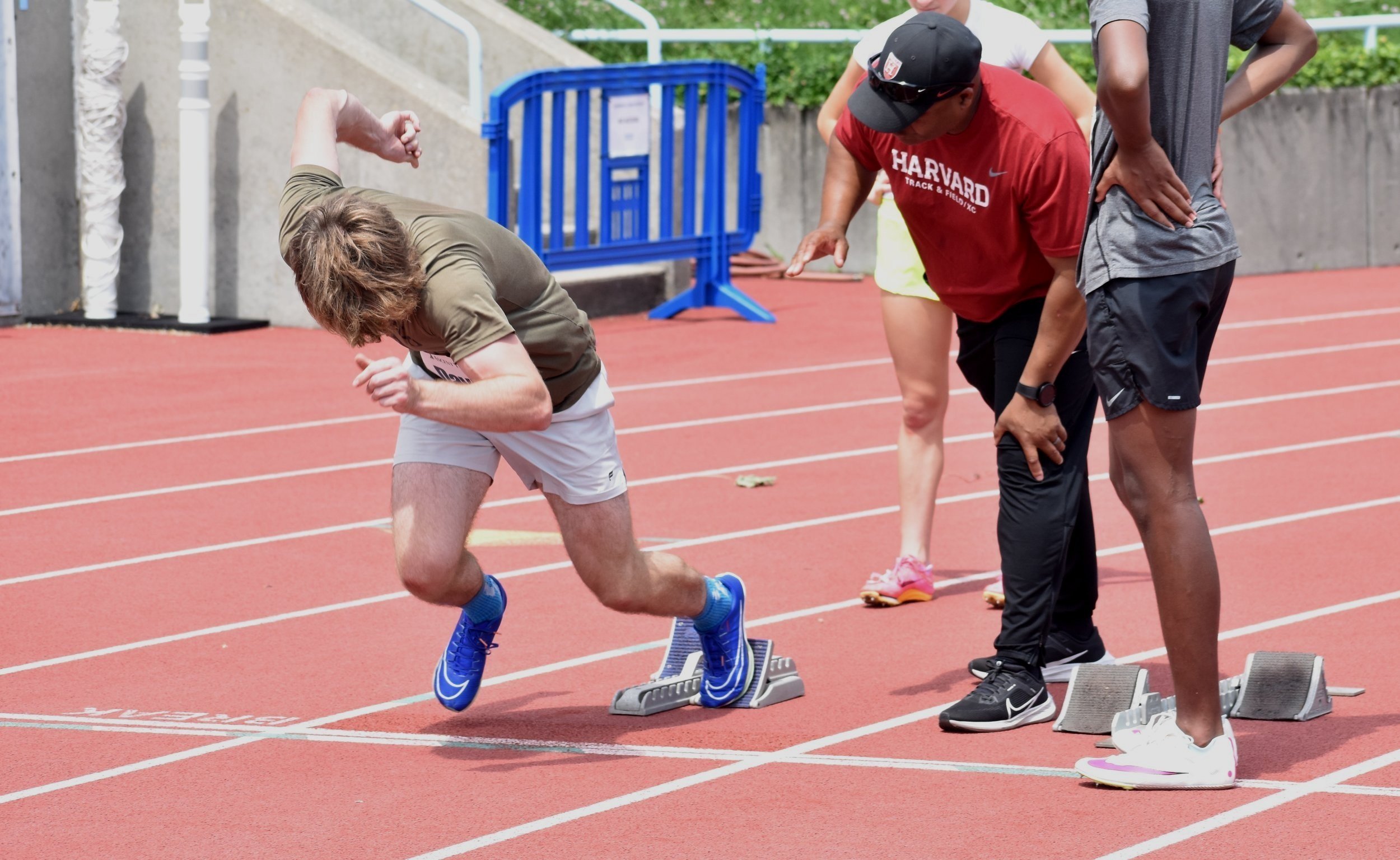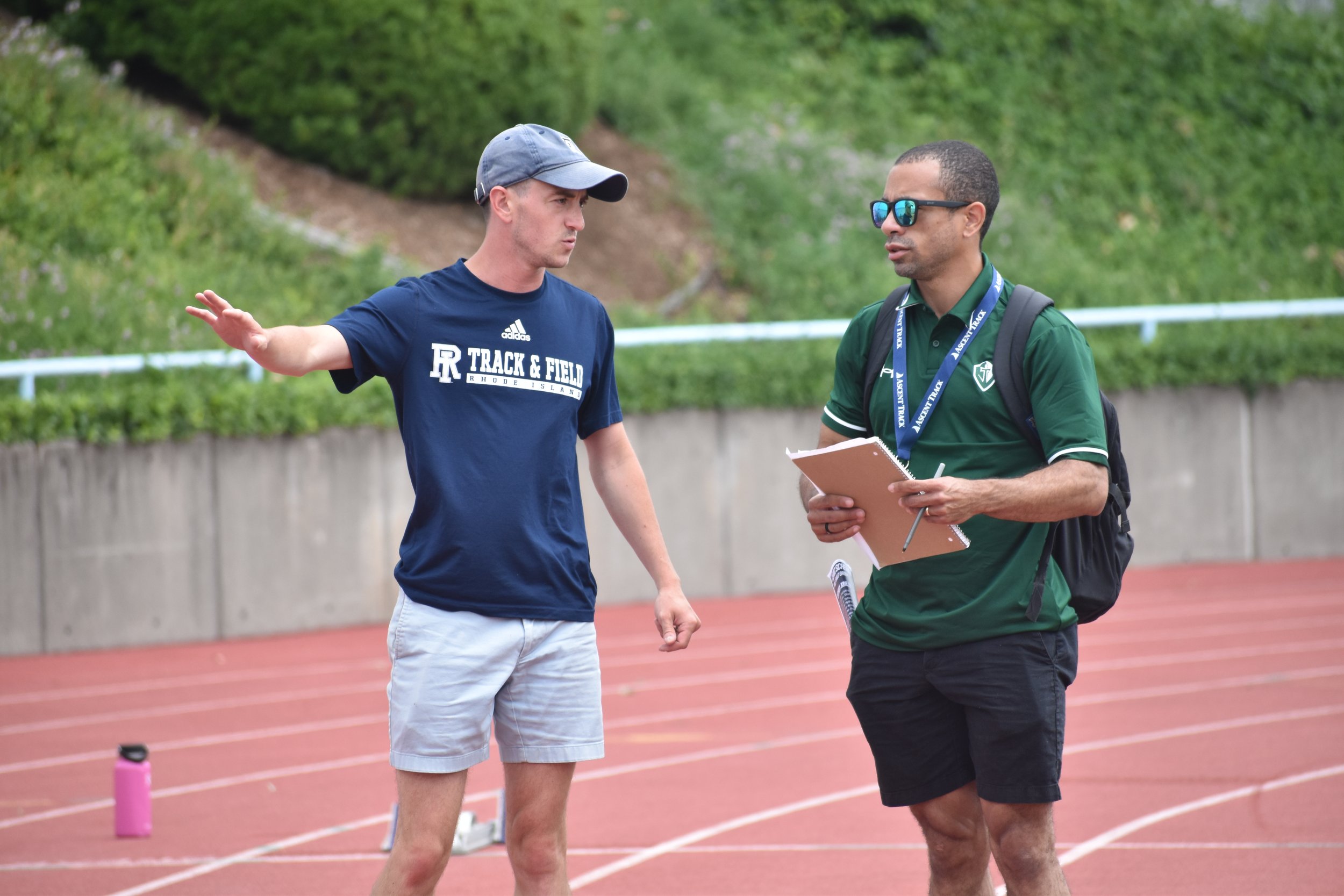
111. The long jump: Technique and teaching
Watch video demonstrations, learn key positions and movements, and get step-by-step progressions and cues for every phase of the long jump in this self-paced course led by veteran instructor and founder of USTFCCCA’s Track & Field Academy, Boo Schexnayder.
~6 Hrs. Duration | 33 Pages of Course Materials | 12 Knowledge Retention Checks
This course is also included in the Horizontal Jumps Bundle.
Course instructor
BOO SCHEXNAYDER
Director, Consultant, Coach
SAC Speed
With over 40 years of experience in coaching and consulting, Boo Schexnayder is regarded as one of the world’s premier field event coaches.
He was the mastermind behind 26 NCAA Champions during his collegiate coaching career, was part 13 NCAA Championship teams and a pair of Juco National titles, and he has developed a host of conference champions and All-Americans.
Schexnayder has also been a prominent figure on the international scene. He has coached 18 Olympians and 7 Olympic/World Championship medalists, and served on coaching staffs for Team USA to the 2003 Pan Am Games in Santo Domingo, the 2006 World Junior Championships in Beijing, and was the Jumps Coach for Team USA at the 2008 Olympics in Beijing.
-
Schexnayder has been just as successful off the track. He is certified at Level I, II and III, and owns the prestigious Master Coach Designation from USA Track and Field. He is also certified by the NSCA as a Strength and Conditioning coach.
Schexnayder has been heavily involved in Coaching Education. He formerly served as national chair of USATF’s Coaching Education Committee, Jumps Subcommittee chair, and chair of the Biomechanics subcommittee.
Schexnayder was also the founder of the Track and Field Academy, the educational branch of the US Track and Field and Cross Country Coaches Association. He served as program director from its inception in 2009 through 2017, and still serves as an instructor in biomechanics, training design, and event-specific courses.
GET ACCESS:
COURSE DESCRIPTION
DEEPEN YOUR UNDERSTANDING OF EVERY LONG JUMP PHASE
Along with LSU jumps coach Todd Lane, instructor Boo Schexnayder breaks down all phases of the long jump event in detail, using video demonstrations to clearly illustrate every key position and movement. Get step-by-step teaching progressions and cues for every phase of the event.
Also included are tips for teaching technique, managing approach accuracy, assembling an approach from scratch, using checkmarks, improving landings, and many other topics. This class also includes and identifies special high-level technical sections that make it a great resource for every level of long jumper.
This course features archived video content that can now only be found here in this course, while the study notes and knowledge retention checks are new materials that are unique to this course.
GET ACCESS:
COURSE LAYOUT
01. THE APPROACH
Learn how to tailor approach length to skill level, determine the best takeoff foot, and navigate the four critical phases—start, drive, continuation, and transition—for a powerful and controlled long jump performance.
DIAGRAM: Approach Basics: Length, Takeoff Foot, and 4 Phases of the Approach (The Start, Drive, Continuation, and Transition Phases)
VIDEO: The Start
STUDY NOTES: The Start
KNOWLEDGE RETENTION CHECK: The Start
VIDEO: The Drive Phase
STUDY NOTES: The Drive Phase
KNOWLEDGE RETENTION CHECK: The Drive Phase
VIDEO: The Continuation Phase
STUDY NOTES: The Continuation Phase
KNOWLEDGE RETENTION CHECK: The Continuation Phase
VIDEO: The Transition Phase
STUDY NOTES: The Transition Phase
KNOWLEDGE RETENTION CHECK: The Transition Phase
VIDEO: Visual Focus in the Approach
STUDY NOTES: Visual Focus in the Approach
KNOWLEDGE RETENTION CHECK: Visual Focus in the Approach
02. CHECKMARK SYSTEMS
In long jump, checkmark systems are essential for ensuring accuracy and consistency in the athlete's approach. This section will discuss the athlete's checkmark and the coach's checkmark.
VIDEO: Checkmark Systems
STUDY NOTES: Checkmark Systems
KNOWLEDGE RETENTION CHECK: Checkmark Systems
03. APPROACH ASSEMBLY
Learn the methodical process of assembling a consistent and effective long jump approach, starting with technical buildups on the track and culminating in seamless execution on the runway.
VIDEO: Approach Assembly
STUDY NOTES: Approach Assembly
KNOWLEDGE RETENTION CHECK: Approach Assembly
04. THE PREPARATION PHASE
The preparation phase in the long jump involves movements just before takeoff that enable the jumper to create vertical forces.
VIDEO: The Preparation Phase
STUDY NOTES: The Preparation Phase
KNOWLEDGE RETENTION CHECK: The Preparation Phase
05. THE TAKEOFF PHASE
The Takeoff Phase in the long jump is critical for both generating the vertical lift necessary for the jump and preserving the key technical elements established in the approach.
VIDEO: The Takeoff Phase
STUDY NOTES: The Takeoff Phase
KNOWLEDGE RETENTION CHECK: The Takeoff Phase
06. THE FLIGHT PHASE
The Flight Phase of the long jump follows the takeoff and is characterized by the jumper's body being in the air. During this phase, the path of the body’s center of mass is determined by the takeoff mechanics, and while the flight path itself cannot be altered, managing body movements and rotations can help optimize landing positions.
VIDEO: The Flight Phase
STUDY NOTES: The Flight Phase
KNOWLEDGE RETENTION CHECK: The Flight Phase
07. TEACHING PREPARATION, TAKEOFF, AND FLIGHT PHASES
In this section, we will discuss teaching methods for the preparation, takeoff, and flight phases of the long jump.
VIDEO: Teaching Preparation, Takeoff, and Flight Phases
STUDY NOTES: Teaching Preparation, Takeoff, and Flight Phases
KNOWLEDGE RETENTION CHECK: Teaching Preparation, Takeoff, and Flight Phases
08. LANDING PHASE
The landing phase of the long jump is crucial for maximizing jump distance and ensuring a smooth, controlled landing. Effective landing involves managing body rotation, maintaining posture, and timing movements correctly. Key technical considerations include the control of forward rotation, proper arm sweep, and positioning of the legs and torso.
VIDEO: Organizational Principles of Weight Training Periodization
STUDY NOTES: Organizational Principles of Weight Training Periodization
KNOWLEDGE RETENTION CHECK: Organizational Principles of Weight Training Periodization
GET ACCESS:
What to Expect
EXPERT INSTRUCTORS
Our instructors are proven track & field veterans with experience as educators, program directors, and coaches at the collegiate, professional, and international levels. Each course has been meticulously planned and prepared by its instructor to ensure a comprehensive learning experience for every student.
SELF-PACED LEARNING
Learn on your own terms in our self-paced educational environment. Progress through video lessons, review study guides, and complete knowledge retention checks all on your own schedule. You can even skip sections and return to them later. There’s no time requirement for finishing the course. Once you buy it, you can access it forever.
DOWNLOADABLE CONTENT
Each course includes supplementary documentation – from study guides and glossaries to diagrams and inventories. All of this documentation is downloadable. Save it, print it, and take it with you to practices and meets to make an immediate impact with your newfound knowledge. Videos you can access wherever you have an internet connection.
KNOWLEDGE RETENTION CHECKS
Complete each course confidently with the help of our knowledge retention checks. After every module, these short quizzes test your knowledge of key concepts to ensure your grip on the material is strong.
Knowledge retention checks are optional unless you intend to receive a Certificate of Achievement upon completion, which requires an 80% or better on all.
CERTIFICATE OF ACHIEVEMENT
Showcase your knowledge to administration and staff with a Certificate of Achievement. You’ll have the option to request one of these if you’ve completed every module of the course and passed all knowledge retention checks with a score of 80% or higher.
GET ACCESS:
Frequently asked questions
Don’t see your question below? Contact us.
-
No, you can choose to enroll at any time you’d like, and take however much time you want to; the course will always be there for whatever timeline suits you.
-
Yes and no– it is not possible to download the video lessons, but you can download all PDF materials.
-
There is no time limit to your login, and you can go back and look at any part of the course you want at any time.
-
You must show that you have an understanding of the material by achieving a mark of 80% or higher on the Knowledge Retention Checks– but don’t worry, you can take those Knowledge Retention Checks more than one time if need be.
-
For any course content, we encourage you to write the questions in the Ascent Track Discord in each class section. For any technical issues, you can contact us at support@ascenttrackclinics.com









